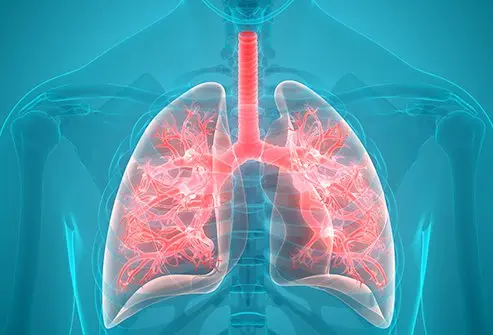When it comes to breathing problems, two common conditions often come up—COPD vs asthma. Though both affect the lungs and cause similar symptoms such as wheezing, coughing, and shortness of breath, they are fundamentally different in their cause, progression, and treatment.
At River NIMS Hospitals, our Pulmonology Department often sees patients confused between asthma and COPD. This confusion can delay the right diagnosis and treatment. Knowing the key differences can help patients and caregivers act early and manage these chronic conditions more effectively.
In this blog, we’ll break down the similarities, the differences, and why it’s crucial to get the right diagnosis.
🫁 What Is Asthma?
Asthma is a chronic inflammatory disease of the airways that causes them to become sensitive and narrow, often triggered by allergens or irritants.

🧬 Causes:
- Genetic predisposition (family history)
- Allergens: pollen, dust, animal dander
- Exercise or cold air
- Pollution and smoke
- Respiratory infections
🔁 Nature:
- Asthma symptoms come and go (episodic)
- It’s often diagnosed in childhood or adolescence
- Inflammation is reversible with treatment
🚬 What Is COPD?
Chronic Obstructive Pulmonary Disease (COPD) is a progressive lung disease usually caused by long-term exposure to harmful substances like tobacco smoke, pollutants, or industrial fumes.

It includes two major conditions:
- Chronic bronchitis: inflammation of the bronchial tubes with mucus production
- Emphysema: damage to air sacs (alveoli) in the lungs
🧪 Causes:
- Smoking (major risk factor)
- Long-term exposure to pollutants
- Rare genetic condition (alpha-1 antitrypsin deficiency)
🔁 Nature:
- COPD symptoms are constant and progressive
- It’s often diagnosed in older adults (40+)
- Lung damage is irreversible
⚖️ COPD vs Asthma: Key Differences at a Glance
| Feature | Asthma | COPD |
|---|---|---|
| Cause | Allergens, genetics | Smoking, pollution |
| Age of Onset | Childhood or adolescence | Usually after age 40 |
| Reversibility | Airflow is reversible | Airflow limitation is permanent |
| Symptom Pattern | Episodic (comes and goes) | Chronic and progressive |
| Triggers | Allergens, cold air, exertion | Respiratory infections, smoke |
| Cough | Often dry | Often productive (with mucus) |
| Treatment Response | Excellent with bronchodilators | Partial response to treatment |
| Curability | Manageable, often lifelong | Not curable, only manageable |
😤 Symptoms: How to Tell the Difference
While both asthma and COPD can cause:
- Coughing
- Wheezing
- Shortness of breath
- Chest tightness
Their pattern and progression are different.
🟩 Asthma:
- Symptoms often triggered by specific events (e.g., pollen season)
- Better in between attacks
- Symptoms worsen at night or early morning
🟥 COPD:
- Constant breathlessness that worsens over time
- Persistent cough with sputum
- Frequent lung infections (bronchitis, pneumonia)
🩺 Diagnosis: How River NIMS Helps
At River NIMS Hospitals, our pulmonologists perform a detailed clinical assessment and advanced testing, including:
- Spirometry: Measures lung function and airflow
- Chest X-ray / CT Scan: To rule out infections or emphysema
- Allergy Testing: Especially for asthma patients
- Oxygen Saturation Tests: To measure breathing efficiency
- 6-Minute Walk Test: Assesses how your lungs respond to exertion
These tests help accurately distinguish COPD from asthma, as some patients may even have features of both—known as Asthma-COPD Overlap Syndrome (ACOS).
💊 Treatment: Managing the Differences
🟢 Asthma Treatment:
- Inhaled corticosteroids (reduce inflammation)
- Bronchodilators (open airways)
- Allergy medications
- Lifestyle changes (trigger avoidance, breathing exercises)
Asthma can often be fully controlled with the right medication and trigger management.
🔴 COPD Treatment:
- Long-acting bronchodilators
- Inhaled steroids (in selected cases)
- Oxygen therapy (for advanced stages)
- Pulmonary rehabilitation
- Smoking cessation programs
While COPD cannot be reversed, early diagnosis and lifestyle changes can slow down progression and improve quality of life.
🧘 Lifestyle Tips for Both Conditions
Whether you have asthma or COPD, some general tips can improve lung health:
- Quit smoking and avoid second-hand smoke
- Use inhalers properly (ask your doctor to demonstrate)
- Keep up with vaccinations (flu, pneumonia)
- Practice pursed-lip breathing and deep breathing exercises
- Avoid outdoor pollution during peak hours
- Maintain a healthy weight and stay active
At River NIMS, our team educates every patient on inhaler techniques, home care, and early symptom recognition.
🧠 Real-Life Scenario: Mr. Rao’s Misdiagnosis
Mr. Rao, a 55-year-old retired teacher, was treated for asthma for years. His breathing worsened despite medication. A visit to River NIMS revealed he had advanced COPD caused by years of smoking.
With the correct diagnosis, he was started on long-acting bronchodilators, enrolled in our Pulmonary Rehab Program, and given oxygen therapy. Today, he lives more comfortably and avoids frequent hospitalizations.
This is why understanding the difference between COPD and asthma truly matters.


👩⚕️ When to See a Lung Specialist
See a pulmonologist if you or a loved one experiences:
- Shortness of breath during daily activities
- A persistent cough lasting over 8 weeks
- Wheezing or chest tightness
- Frequent colds turning into chest infections
- Reduced exercise tolerance
Early diagnosis improves lung function and prevents irreversible damage.
🔚 Final Thoughts: Why the Right Diagnosis Is Life-Changing
COPD vs asthma may seem similar at first glance, but they are distinct diseases with different causes, treatments, and outcomes. Misdiagnosis can delay the right care and lead to avoidable complications.
At River NIMS Hospitals, our goal is simple: Breathe better, live better. With advanced diagnostics, personalized care, and ongoing support, we help you take control of your lung health—one breath at a time.



